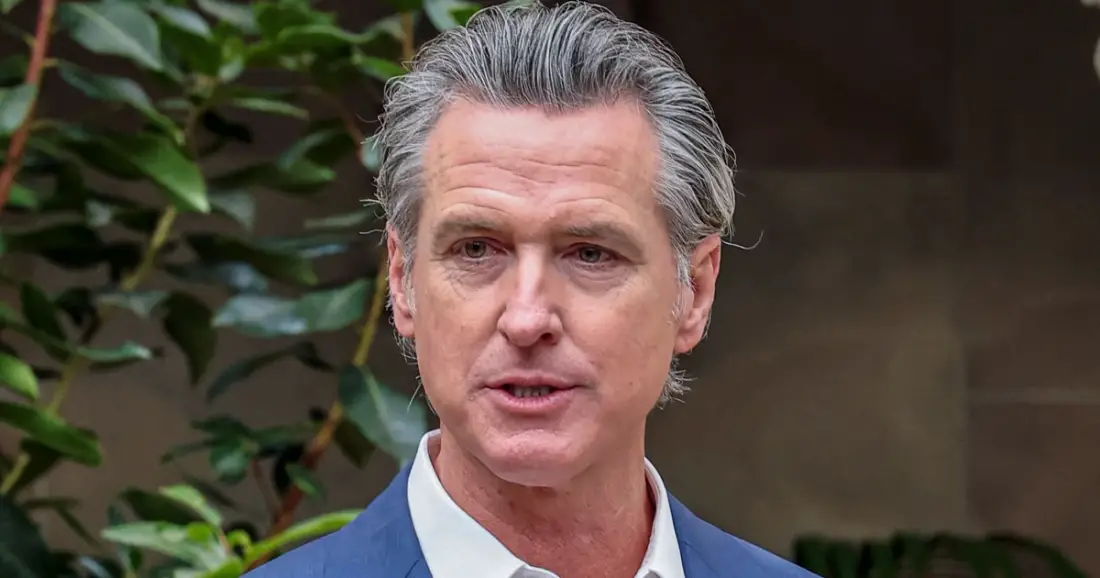A governor in the spotlight
California Governor Gavin Newsom has been a lightning rod in American politics for more than a decade. Critics on the right often point to his state’s high taxes, strict environmental regulations, and sweeping pandemic-era mandates as examples of progressive overreach. Admirers on the left see him as a polished communicator and unapologetic defender of liberal priorities at a time when Democrats are searching for generational leadership beyond President Joe Biden and Vice President Kamala Harris.
Now, with the 2028 presidential race beginning to take shape, Newsom’s national profile has elevated him to the top of early Democratic polling. But a closer look at recent surveys reveals troubling weaknesses with key constituencies — vulnerabilities that Republicans, including presumed GOP nominee Vice President JD Vance, are already preparing to exploit.
The polling picture
A Yahoo News/YouGov poll conducted September 2 placed Newsom ahead of other Democratic hopefuls with 21% support among registered Democrats. Vice President Kamala Harris trailed just behind at 19%, while Rep. Alexandria Ocasio-Cortez registered 12% and former Transportation Secretary Pete Buttigieg drew 10%.
The numbers confirm what political insiders have suspected for months: Newsom has carved out a narrow lead in the still-forming Democratic field. His position is helped by the fact that Harris, despite her status as vice president, remains polarizing even among her party’s base.
But Newsom’s advantage in the primary masks deeper problems. When the pool is broadened to all voters, his support weakens considerably. A Cygnal survey released September 9 shows his national approval underwater at -5, with 38% approving and 43% disapproving.
That net negative rating puts him in a more precarious position than Harris, who has struggled herself but has historically performed slightly better with swing constituencies.
Struggles with non-college voters
Perhaps the most glaring weakness for Newsom lies with non-college-educated voters. Once considered the backbone of the Democratic coalition, this group has drifted steadily toward the GOP over the past decade.
The Cygnal survey found that non-college voters disapprove of Newsom by a stunning 21-point margin (48% to 27%). By comparison, Harris underperformed with the same group in 2024, but only by 13 points.
The margin matters because non-college voters form decisive blocs in Rust Belt states like Michigan, Ohio, Pennsylvania, and Wisconsin — states that Democrats must hold if they want to maintain a path to the White House. Newsom’s inability to connect with this demographic could give Vance and Republicans a decisive advantage in regions where margins of a few thousand votes have historically determined outcomes.
Weakness with swing voters
Swing voters are another group showing resistance to Newsom. The same survey found him trailing by 12 points among these voters, with 41% disapproving of his performance and just 29% approving.
The numbers contrast sharply with the 2024 election, when independents narrowly sided with Harris over Donald Trump, 49% to 46%. With independents now making up a record 43% of the electorate — outnumbering both Democrats and Republicans, who are tied at 28% — their preferences could prove decisive in 2028.
If Newsom fails to improve his standing with swing voters, analysts warn, he risks repeating the same mistakes that have dogged Democrats for the last three election cycles: strong showings on the coasts but underperformance in the Midwest and Sun Belt battlegrounds.
Trouble with men and high-propensity voters
The challenges don’t stop there. Among college-educated men, another critical group, Newsom faces a narrow but concerning deficit. Forty-nine percent disapprove of his leadership compared to 46% who approve. These voters backed Harris over Trump in 2024 by a single percentage point, meaning even minor shifts could swing electoral votes in closely divided states.
Newsom also struggles with “high-propensity” voters — those who have participated in all four of the most recent national elections. This group, while slightly left-leaning in recent years, remains skeptical of him. His approval among them stands at 44%, compared to 46% who disapprove.
For Republicans, the trend is an opportunity. Vice President JD Vance, a candidate with roots in working-class Ohio and a record of appealing to culturally conservative but politically unaffiliated voters, is well positioned to capitalize on disaffection among both non-college voters and high-propensity independents.
Erosion of Black religious support
Another red flag for Newsom comes from a constituency long seen as a Democratic firewall: Black voters. While he maintains strong support overall, the Cygnal data highlights a soft spot among religious Black Democrats who attend services monthly or more. Sixteen percent of this group view him unfavorably.
That may seem like a small number, but in early primary states such as South Carolina — where Black churchgoers are a dominant force — even modest erosion could prove damaging. In a contested field, those voters could shift momentum to another candidate, potentially undermining Newsom’s path through the primaries.
Republicans prepare to pounce
Republicans are already signaling how they intend to frame Newsom if he emerges as the Democratic nominee. His record in California provides ample material: homelessness crises in major cities, high taxes, expensive housing, and population outflow to other states.
Vice President Vance has sharpened his critique around the theme of “California values,” casting them as elitist, unworkable, and disconnected from the concerns of ordinary Americans. GOP strategists believe that while Newsom’s polished style plays well on the coasts, it will prove toxic in the Midwest and South.
“The next presidential election is just over three years away and a great deal can shift before then, but early polling hints at Newsom’s weak spots with key constituencies, particularly non-college voters and independents,” one analysis concluded.
A self-inflicted controversy
If weak polling wasn’t enough, Newsom also sparked controversy with a cryptic post aimed at Homeland Security Secretary Kristi Noem.
His press team wrote on X (formerly Twitter): “Kristi Noem is going to have a bad day today. You’re welcome, America.”
The message raised eyebrows and immediate criticism, with several users comparing the tone to ominous online statements made before the assassination of conservative activist Charlie Kirk earlier this month. Acting U.S. Attorney Bill Essayli in California referred the matter to the Secret Service for review, underscoring the seriousness of the misstep.
For a candidate already facing questions about electability, the episode was an unwelcome distraction and a reminder of how quickly perception can shift in a hyper-polarized climate.
Democrats’ dilemma
For Democrats, the question is whether Newsom’s appeal within the party will translate into broader national viability. His strengths are clear: a strong fundraising network, high visibility, and the ability to articulate progressive policies with ease. But his liabilities are equally glaring: weak connections with swing voters, skepticism among men and independents, and an unfavorable national rating.
If 2028 comes down to a contest between Newsom and Vance, Republicans believe they have an opening. Vance could consolidate support among non-college voters, independents, and high-propensity participants while chipping away at Black religious Democrats.
In that scenario, Democrats would once again find themselves in the familiar position of dominating the coasts but struggling in the industrial Midwest and beyond.
Conclusion: promise and peril
Gavin Newsom enters the 2028 race as the Democratic frontrunner, but his path to the presidency is anything but secure. Early polling confirms his strength within his party but reveals vulnerabilities that could cripple him in a general election.
With three years to go, there is time for the California governor to adjust his message, broaden his coalition, and reassure skeptics. But for now, his standing looks less like a commanding lead and more like a precarious perch — one that Republicans, and especially JD Vance, are eager to knock down.

Adrian Hawthorne is a celebrated author and dedicated archivist who finds inspiration in the hidden stories of the past. Educated at Oxford, he now works at the National Archives, where preserving history fuels his evocative writing. Balancing archival precision with creative storytelling, Adrian founded the Hawthorne Institute of Literary Arts to mentor emerging writers and honor the timeless art of narrative.
